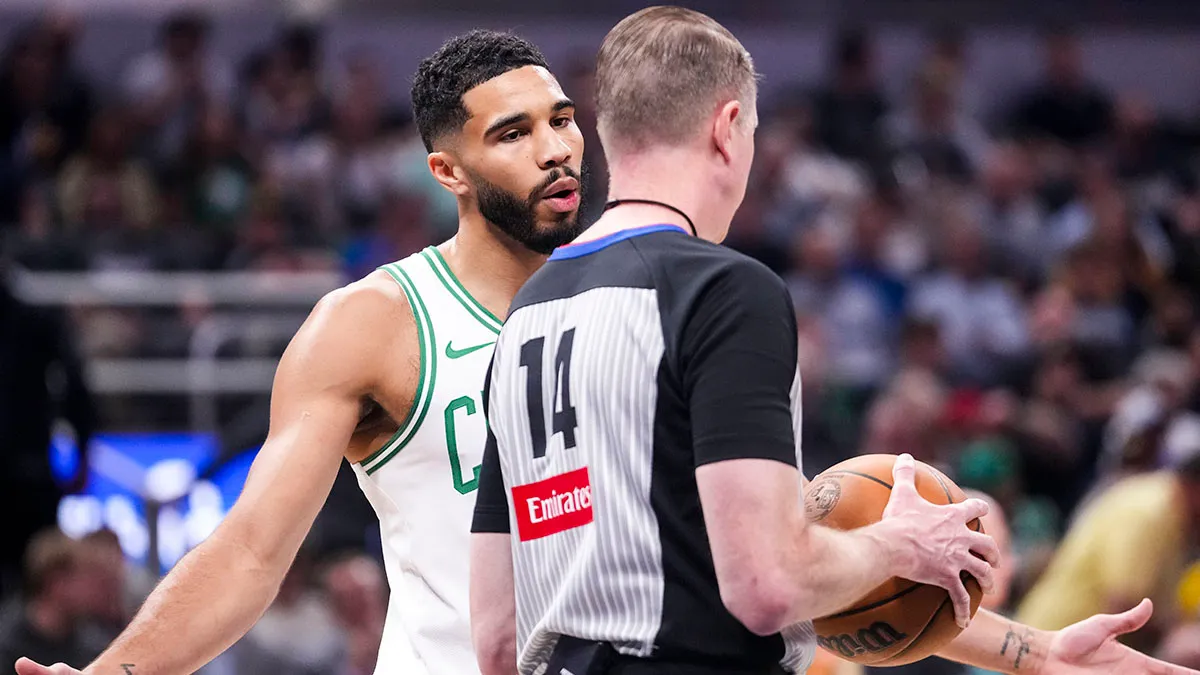With NBA roster building, where there’s a will there’s a way -- or at least a collective bargaining agreement loophole to aid the cause.
But the sobering reality for the Boston Celtics this summer is that they are extremely limited in means of signing outside talent and the CBA conspires against them at most turns, meaning the green are likely to be spectators when it comes to available free agents.
As we previously detailed, Boston doesn’t have any particularly easy avenues to adding impact talent this offseason. Unless a veteran player is willing to sign a sweetheart of a deal to play for the $6 million taxpayer midlevel exception, then Boston will largely be left hunting under-contract players that might be available via the trade market utilizing on-roster talent (Tristan Thompson’s $9.7 million contract) or trade exceptions (including the $11 million left on Gordon Hayward’s TPE).
Stay in the game with the latest updates on your beloved Boston sports teams! Sign up here for our All Access Daily newsletter.
Celtics Talk Podcast: Exclusive interviews with Ime Udoka, Brad Stevens, and Al Horford | Listen & follow | Watch on YouTube
We know what you’re thinking: C’mon, nerd. Teams find ways to add big-name free agents every year despite these obstacles. Drum up some sign-and-trade scenarios and deliver Lonzo Ball to Boston’s backcourt.
The Celtics cannot take back a player in any sign-and-trade this summer without triggering a hard cap that would limit them to spending to the tax apron (roughly $139 million). Boston cannot exceed that number at any point during the season after receiving a player via sign-and-trade.
Boston Celtics
That’s problematic, not only because the Celtics already have $123 million in guaranteed salary on their books -- that’s before potentially re-signing unrestricted free agent Evan Fournier -- but also because it could hinder Boston in pursuit of a third star should a desirable player become available during the 2021-22 season.
If the Celtics' primary goal is to maintain as much flexibility as possible in pursuit of that next star to pair with Jayson Tatum and Jaylen Brown, then it’s critical to preserve all options to ingest a bulky contract.
But let’s just go down the Ball wormhole since Celtics fans are largely obsessed with him filling the point guard void after Kemba Walker’s departure (understandably so because of his age and skill set). Ball could command a salary somewhere around $20 million per season and bringing him to Boston would invoke the hard cap, providing obstacle No. 1 (that’s if Ball even wanted to consider Boston and New Orleans was a willing facilitator).
The Celtics cannot absorb Ball into any trade exceptions and would need to send out salary to match. But there’s a new complicating factor: The artist formally known as base year compensation. Long story short, the NBA previously put safeguards in place to prevent over-the-cap teams from signing free agents to inflated salaries in order to facilitate trades. While base year compensation was erased from the 2011 CBA, it lives on in scenarios like this.
The Pelicans, as an over-the-cap team, can only take back roughly $13 million in salary because Ball’s outgoing value is the greater of 50 percent of his new deal (so roughly $10 million) or his previous salary ($11 million). So, the two sides would need to get a third team involved to make the trade math work.
Is that nerdy enough for you?
In this instance, the Celtics likely are forced to send out someone like Marcus Smart and don’t have the remaining resources to sign Fournier without juggling the hard cap. Essentially, there are almost certainly too many obstacles to adding a high-price tag player via sign-and-trade, especially younger players who are set for a large pay spike that invoke base year compensation.
Mannix: There's a 'really good market' for Marcus Smart
Since that isn’t a particularly easy path, let’s downshift and try to find a free-agent player on a more reasonable number who Boston could absorb into the Hayward trade exception.
Let's say the Celtics want to bring home Kelly Olynyk. He wants a salary north of the $6 million taxpayer MLE but is content at $11 million per year. Boston’s only avenue to adding him -- at least without sending out salary and draft capital because we’re guessing the Rockets don’t desire Tristan Thompson -- is to absorb Olynyk’s new deal with the Hayward exception.
So the Celtics are adding an $11 million salary and triggering the hard cap while still having to figure out what happens with Fournier. If they can move Thompson -- without splurging too much on draft capital that could be vital for future star pursuits -- then that’s somewhat tenable. But it’s about Boston’s only big summer swing and adds the hard cap nuisance for the next calendar year.
That's why we previously pitched the idea of chasing someone like Tomas Satoransky in Chicago. It’s certainly not the sort of big splash that fans crave but he’s under contract at a digestible number and allows for increased flexibility moving forward without the hard cap.
Two names the Celtics would have to consider for a Jaylen Brown trade
The Celtics could chase anyone under that $11 million figure but the more desirable names might require utilizing prime draft capital, which isn’t ideal if Boston needs future first-rounders to chase a third star.
So it’s probably a waste of time to daydream about Ball or most of the restricted free agent class (Lauri Markkanen and Duncan Robinson). Don’t spend much time thinking about Kyle Lowry or Mike Conley unless they want to play for much smaller paydays.
The Celtics are going to have to get creative, but that’s far more likely to involve under-contract talent than the 2021 free-agent class. This team simply cannot afford a free-agent splurge. And, more importantly, it cannot afford more obstacles in the quest to add a legitimate third star.


